HomePod: The BirchTree Review

Introduction
The HomePod is an interesting product from Apple. It’s a smart speaker that Apple is going out of its way to make you think is not like other smart speakers, which is a classic Apple maneuver1. Apple is partially right to do this because it leans into what the HomePod does incredibly well and diverts attention from the features that are not as fleshed out yet.
This review will treat the HomePod as fairly as I think is possible, but I will not ignore the smart speaker stuff just to line up with Apple’s marketing. This is partly because Apple literally said you should buy a HomePod instead of an Amazon Echo, but also because one might argue that the speaker and smart speaker markets are basically the same thing at this point. Also, as the sage John Gruber aptly put it:
No one other than a gadget reviewer is going to put both a HomePod and Echo in their kitchen. They’re going to have one. It is, most certainly, a competition.
The nitty gritty details are below, but here’s the tldr version:
Pros
- Sound is amazing! HomePod punches above its weight class.
- Apple Music integration is great, and musical selections are on point.
- A bunch of little details make the day-to-day experience delightful.
- It looks good on just about any shelf.
Cons
- This is only for loyal Apple fans; Spotify and Android users need not apply.
- AirPlay connections only means using this with non-Apple devices is a PITA (an app like Allcast might work okay).
- Siri is often frustrating to use, and must improve quickly.
- Listening to podcasts sucks unless you just AirPlay from your phone.
Set Up
Setting up the HomePod is trivially easy. As with all recent Apple products, you can simply hold another iOS device near the HomePod and it will automatically set itself up in just a few taps. The HomePod has a slightly more extensive setup as you need to choose whether to allow personalized requests and what room you are placing the speaker.
The whole setup took maybe 2 minutes and I was all set. It’s counterintuitive, but I kind of miss the days when you brought a new gadget home and it took you an hour or more to get it set up. Kids these days just wouldn’t understand.
HomePod Settings
There isn’t much in the way of settings for the HomePod; it basically is what it is. The settings can however be found in the Home app on your iOS devices (it took me forever to figure this out) and this is what you can control:

There isn’t much there, and notably there are almost zero settings for audio. The only setting that will change the audio in any way is the “sound check” setting that will try to normalize the volume of all content. For a speaker aimed at audiophiles, it’s disappointing to have no meaningful control over the sound. I understand that Apple is doing some elaborate stuff here to make the sound as good as it can be, but I would love to see a slider on this page that let me adjust how prominent the bass is. I find the bass to be too much at even medium volume in my apartment, and my dad found the bass to be too light in his house. Even if it made tiny adjustments, it would be a huge help.
Build Quality
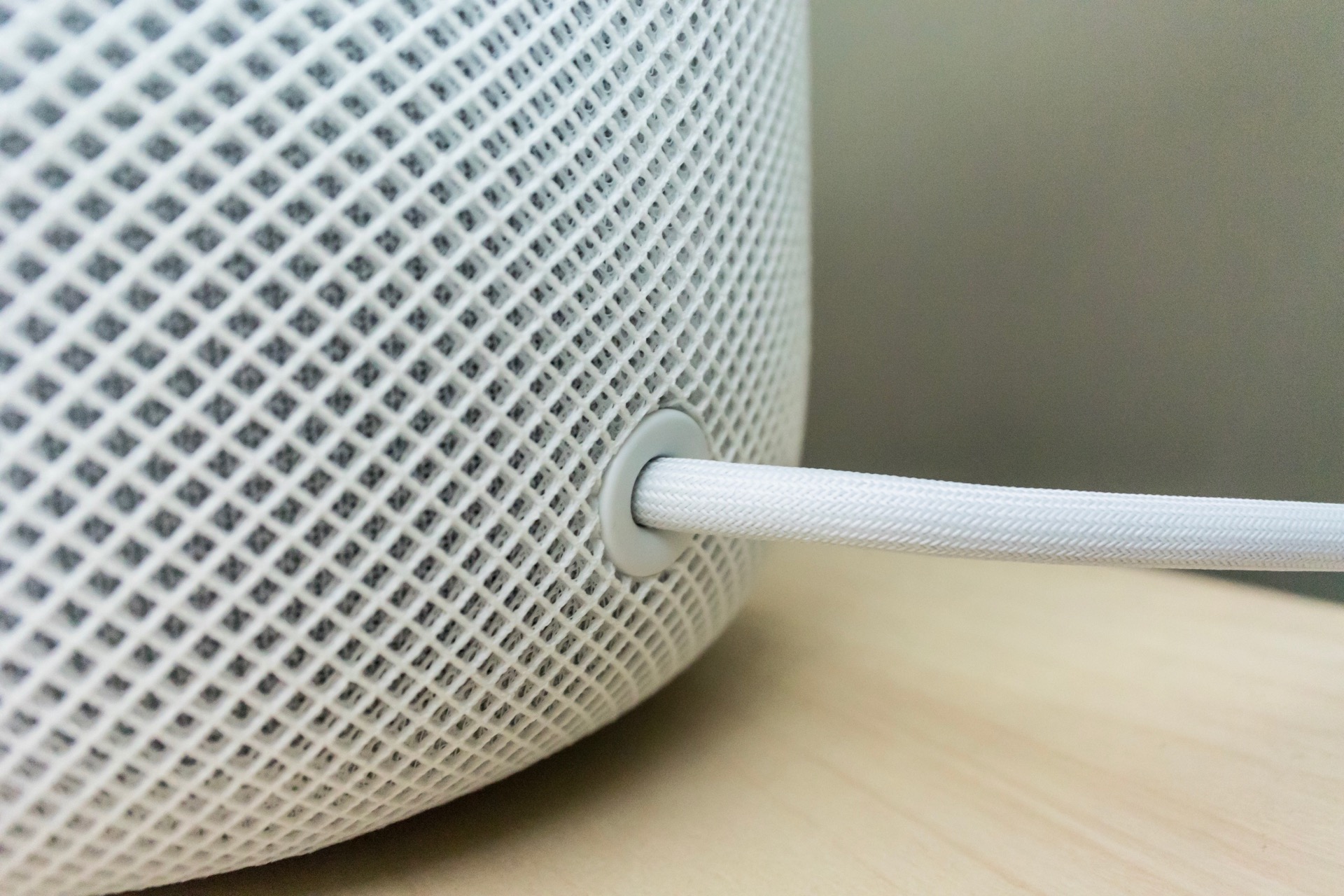
The HomePod is a wonderfully designed piece of hardware. As many others have said, the device is much heavier than you expect it to be. It’s almost exactly as tall as an iPhone 6/7/8 Plus, but it weighs as much as a brick. Seriously, if this thing didn’t have this soft fabric on the outside, this would be a good tool for breaking through a glass window.
Everyone and their mother was talking about the power cable on this thing, and as far as power cables go, this is a really nice one. It’s braided with a similar fabric to what is on the HomePod itself and feels quite sturdy. It’s a little shorter than I would like, although at about 6 feet long (eyeballing it here) it gets the job done in almost all situations I had for it.
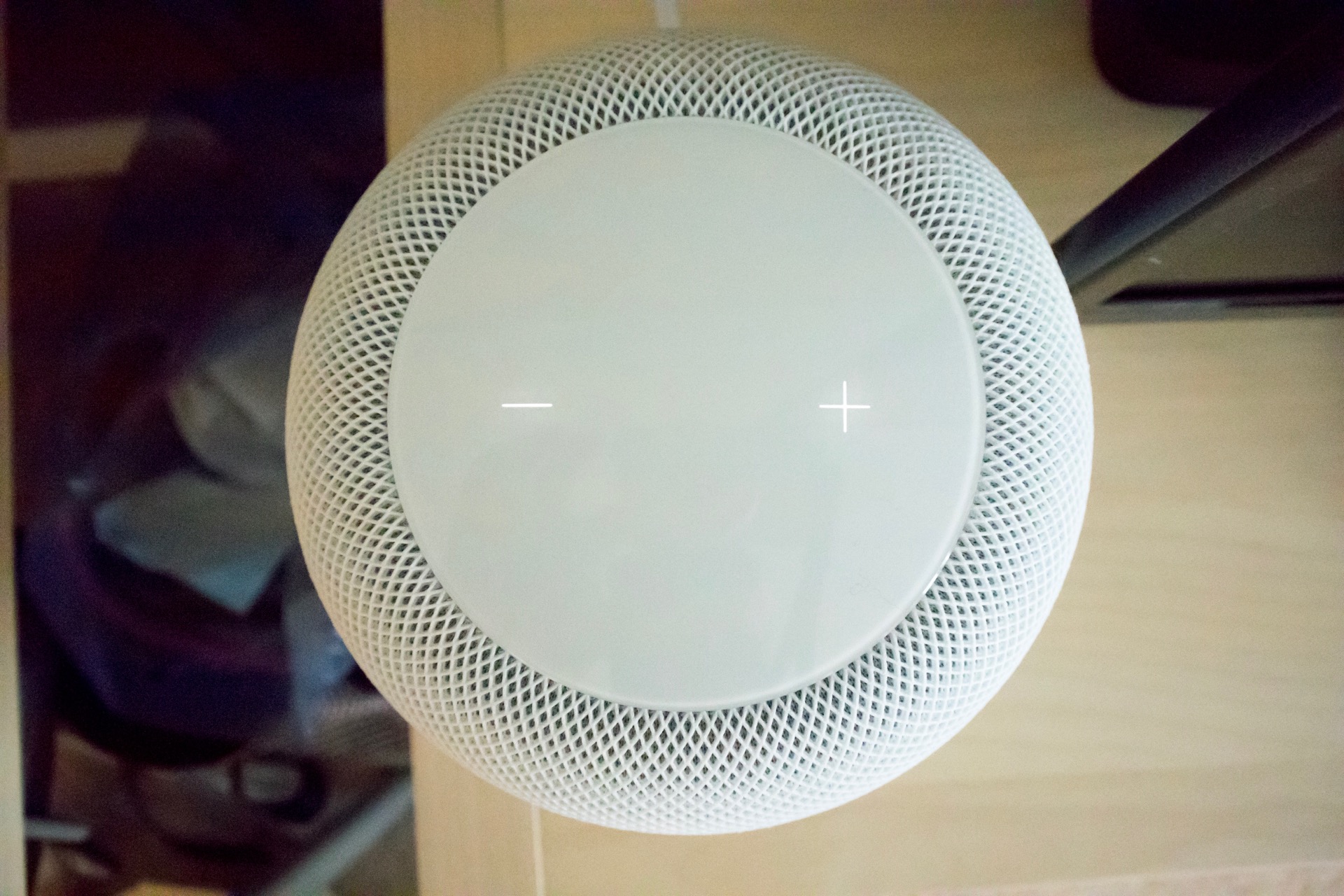
The top of the device has a touch screen with a few semi-static LEDs beneath a frosted glass. Plus and minus buttons appear whenever something is playing and these let you adjust volume. A Siri “paint smudge” appears when Siri is listening or talking as well. The entire top portion is touch-sensitive and can be tapped to play/pause whatever is playing, and just like inline controls on most headphones, double tapping skips forward and triple tapping skips back. This is very sensitive and the HomePod always remembers what you were listening to last, so be prepared to just graze it with your hand and have something from hours ago start playing immediately.
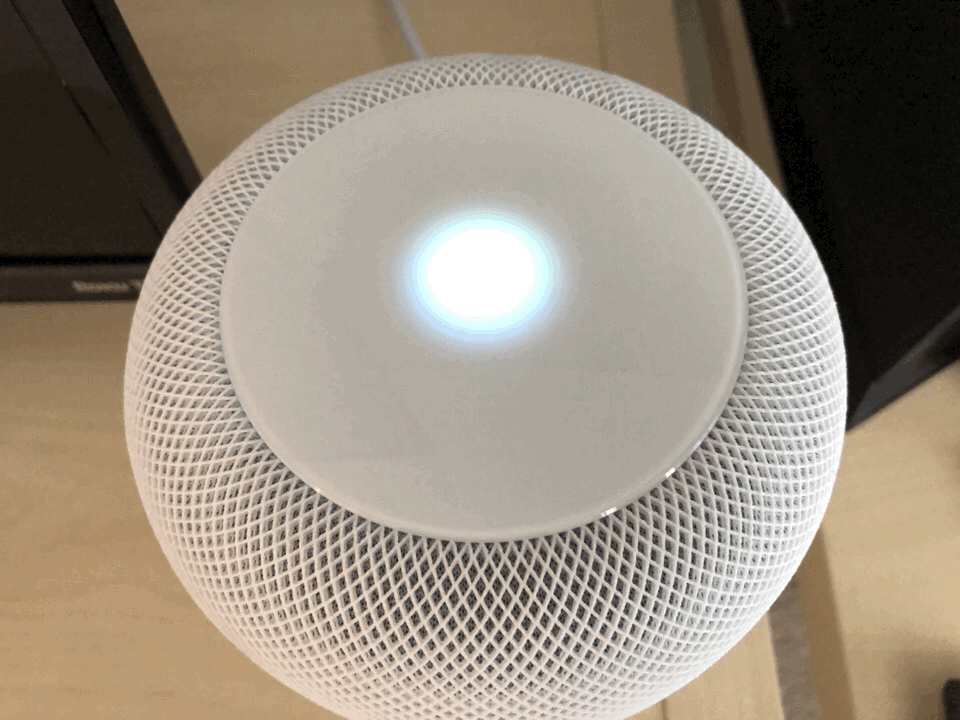
The thing just looks good too. I have an Echo Dot, which the best thing I can say about it is that it is hard to notice. The Google Home looks better, and the HomePod looks better still. I’m a big fan of this design and am super happy with the white model I chose.
I should note that people are reporting rings forming on their finished wood furniture in some cases, but I have not experienced this in my testing. I have the benefit of only using this on non-treated light-colored wood, though. And while this is not a HomePod-only problem, this is not an excuse for this not being properly communicated to users.
Sound Quality
I honestly don’t have much to say here, and the less I say the better; others have more than covered this to death, so I’ll be brief.
The HomePod sounds amazing. I don’t know much about sound quality and the most expensive pair of speakers I ever owned cost $99, so this sounds way, way better than everything I had in my apartment. I did take it over to my parents’ house and compared it to a $500 Bose Soundtouch 30 and I thought it sounded better than that too (my dad disagreed, but said it was close).
My only complaint here is that the bass on this thing is not built for people in apartments. I have had to keep the volume way down because the bass was too intense and could definitely be heard in the next units over. And when I had it on my desk for a few minutes2, it vibrated the desk so much that even at 5% volume the vibrations could be heard from the hallway. Wow!
Oh, and I don’t know what people were tripping on when they said this thing has “3D sound” or that “stereo” is an antiquated term after hearing this. The HomePod sounds great and it does a fantastic job of making things sound good everywhere in the room, but this is a mono speaker no matter what fanciness the embedded A8 chip is doing.
I should also note that AirPlay 2 features as well as being able to pair multiple HomePods together to create a stereo sound experience is coming soon, but is not here yet. Since I have but one HomePod to test, I will not be able to use these and they don’t impact me at all, but know that they are hopefully just on the horizon.
Music Playback
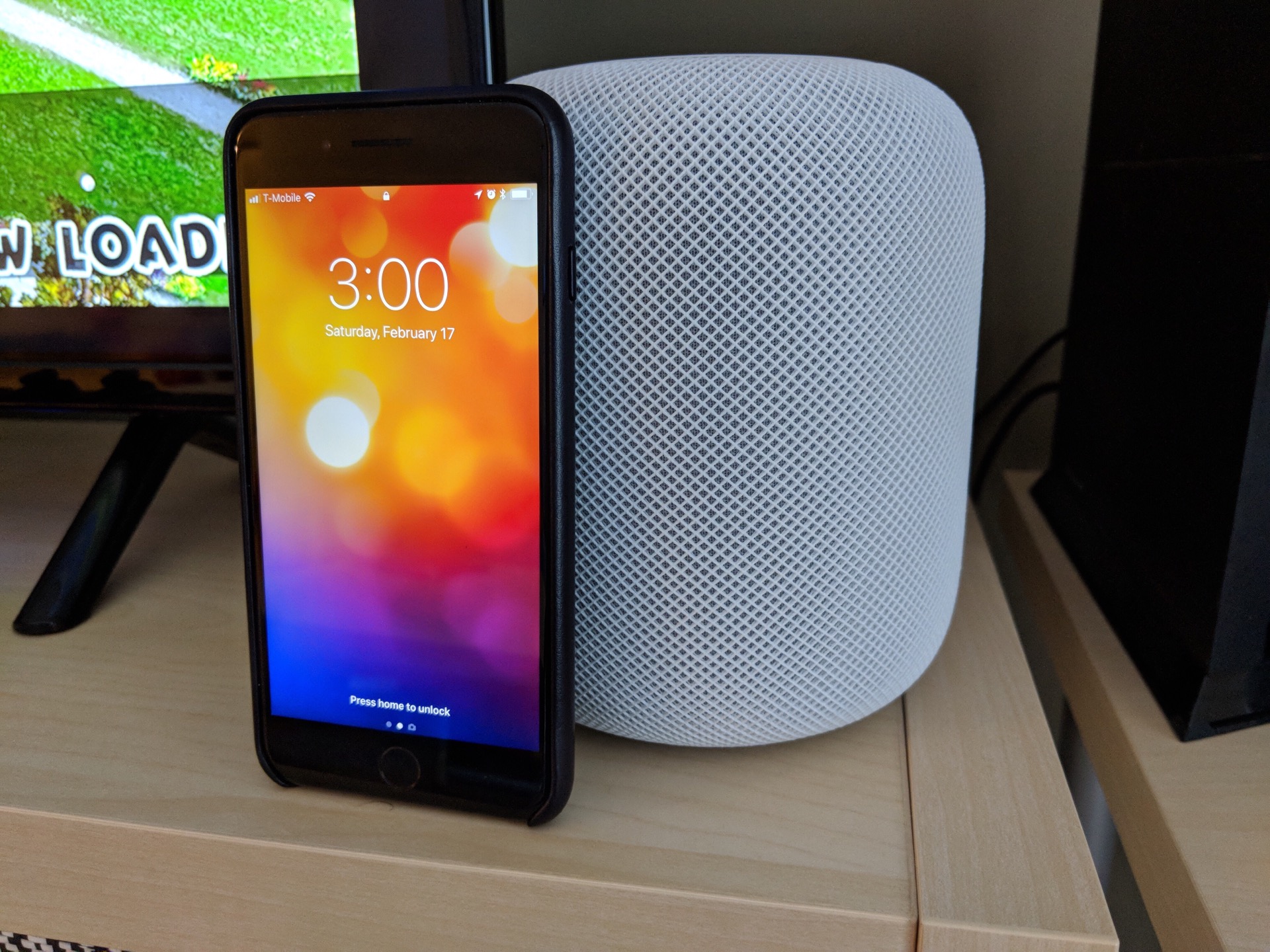
As you likely know, the HomePod only has support for voice commands with Apple Music. As a longtime Apple Music subscriber, this isn’t an issue for me, but it may be an issue for you if you use Spotify or another music service. The HomePod acts as an AirPlay device, so any of your Apple products can connect to it and play whatever media you want, but it was clearly designed to be controlled with a voice and it’s at its best when you’re doing just that.
Playback is a breeze, with songs playing quickly after request and Siri is mostly accurate in guessing what I mean when I ask for a song or artist. It’s not perfect, such as when just today I asked it to “play songs by Elliott Smith” and it replied “ok, here’s some songs from All American Rejects.” Ooooookkkkkkk. But that is by far the exception and not the rule. Siri has proven excellent at understanding what I’m asking for.
This extends to non-specific music requests too. If you just say “hey Siri, play” it will start up a personalized radio station based on your taste. Asking it to “play happy music” or “play something quiet” or “play popular songs from 2007” worked great. As far as a digital assistant for music, this thing does better than Google or Alexa.
Podcast Playback
Podcasts are about as good as they are on any other smart speaker, which is to say not very good at all. Super casual listeners might be satisfied, but anyone who is advanced enough to have installed a podcast app besides Apple’s own app will likely find it wanting.
First off, HomePod has no voice input support for other podcast apps, so users of Overcast, Pocket Casts, and the like will not be able to say things like “resume the latest episode” and have HomePod pick up where you left off in your app. The good news is that iTunes has the most complete library of podcasts out there, so you can almost always say “hey Siri, play the latest episode of The BirchTree Podcast” and it will find and play it right away.
The next bit of bad news is that the HomePod does not remember your progress, so playing long episodes is a pain. It appears to occasionally sync my play location for shows I have subscribed to in the Podcasts app for iOS, but not always, which is weird behavior. At least you can say things like “fast forward 47 minutes” if you know the timestamp for where you left off. That’s a hacky solution and feels way less magical than this product is supposed to feel, but it works in a pinch.
These limitations lead to me just opening my iPhone and AirPlaying Overcast to the HomePod. It’s not ideal, and it certainly feels less elegant than the music interactions with it, but it gets the job done.
And it goes without saying that podcasts sound astoundingly good on the HomePod. Also, while the playback speed defaults to 1.0x, you can ask it to play faster and it will go faster.
Using it as an Apple TV Speaker
If I could justify the cost then I would buy a second one of these to be my full time Apple TV speaker (and would also turn off “Hey Siri”). Movies and TV shows sound amazing on this thing, and far outpace anything built into a TV set. But the experience is not perfect and I have disconnected my HomePod from the Apple TV except when I’m watching a movie.
My biggest issue with using this as an Apple TV speaker is that it’s awkward to have your voice assistant and TV tied to the same audio source. Watching TV means I can’t ask it to do anything for me, lest it freeze the video or at least dip out the audio while it listens and answers my query. This may not be a big deal to you, but it always felt like the HomePod was doing one too many things at once and it was just kind of uncomfortable.
Additionally, while the HomePod works as an Apple TV speaker, it has no other inputs, so you can’t hook up your TV in general, game consoles, other streaming boxes, or BluRay players to it. I’d love to play through Horizon Zero Dawn though the awesome sound of the HomePod, but sadly I will need to buy speakers from another company to do this.
This is really reaching at this point, but would also be nice to be able to say “hey Siri, pair with the Apple TV” to get it to connect. Instead you have to go to the settings app in the Apple TV itself and select the audio output device. It’s a pain when you just want to start watching a movie.
Smart Speaker Catch-All
Apple has built basically all of Siri into the HomePod, so let’s take a look at how Siri performs here. I’m just going to list everything of note that I’ve found.
How you doing, Siri?
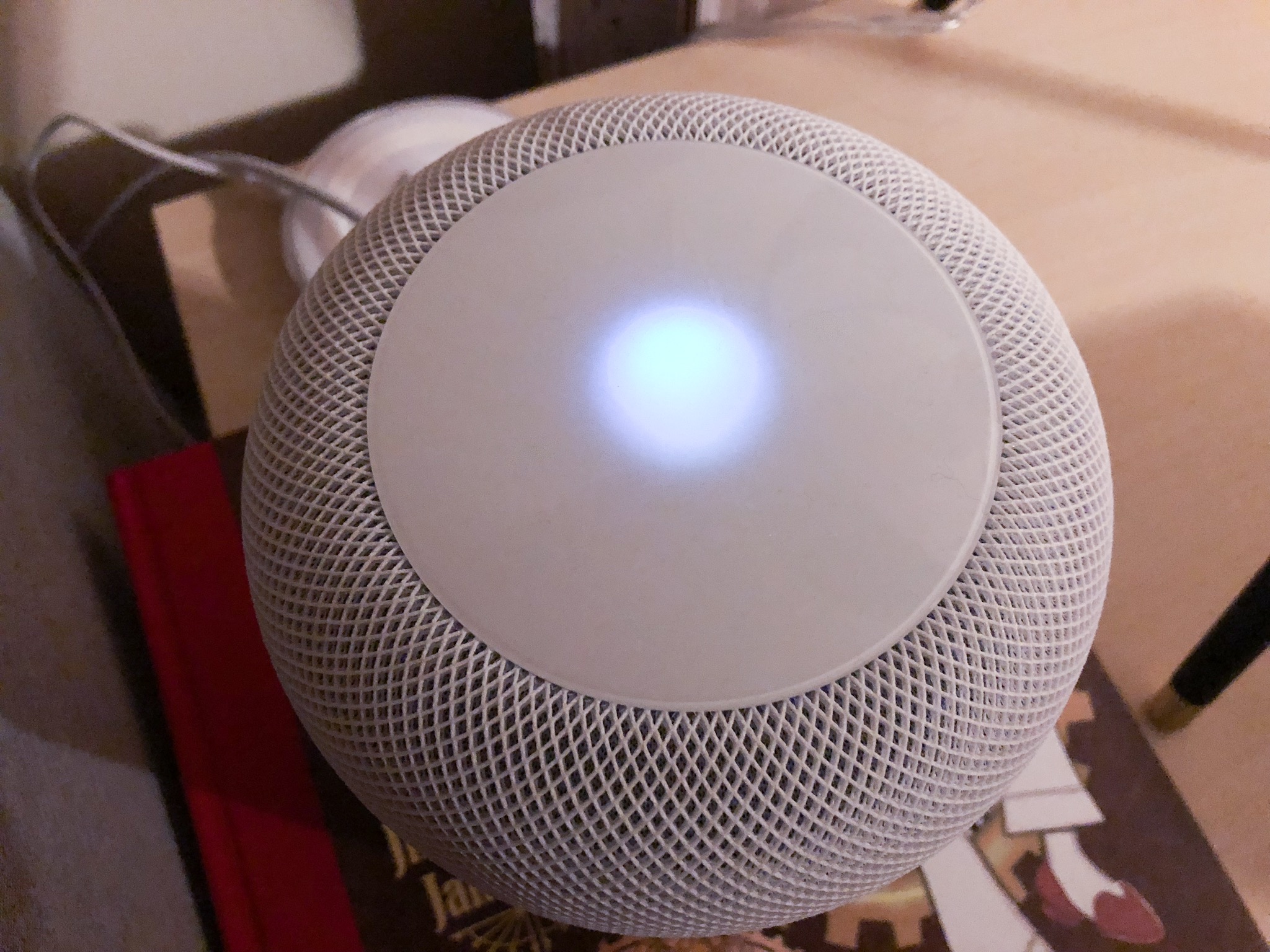
Siri is the same old Siri you know and love/hate/tolerate (choose one). It’s not remarkably smarter or dumber here, so don’t expect it to be able to change you mind on Siri overall.
That said, more important than just about anything else is adding new abilities to Siri. More third party developers should be able to tap into Siri via SiriKit, especially audio apps of all varieties. There should also be iCloud settings for Siri where I can choose default apps to perform certain actions. I should be able to have “remind me to talk to Brian at 8am tomorrow” create a todo item in Remember the Milk if I’d like. I shouldn’t have to add “in RTM” at the end of the request. Adding the ability for podcast apps and other music apps to perform requests would make it easier for most people reading this review3 to listen to their podcasts seamlessly between their iPhone, iPad, Mac, and HomePod.
“Hey Siri”
The 6 far-field microphones do a great job of hearing me. I can be in the next room and it hears me just fine, and I can even turn up the volume on music it’s playing and still ask “hey Siri” at a reasonable tone and it will hear me. I have not experienced the “supernatural” voice pickup some others have reported where you can basically just mouth the words and it hears you, but it’s good. It’s unquestionably better than Google Home or Alexa at hearing me, though.
The HomePod is just another device in my life that responds to “hey Siri,” and I continue to be impressed with Apple’s ability to figure which device I’m talking to:
- All devices at rest: HomePod responds
- Using my phone: HomePod responds
- Raising my phone and asking right away: iPhone responds
- Raising my wrist: Apple Watch responds
- Manually trigger Siri on phone/tablet/watch: that same device responds
Basically, it works 99.9% of the time. This is great, because HomePod is most likely the device I want to respond.
It can be a problem when something is asked that can’t be done on the HomePod, though. For example, I can ask for something that I know will trigger a web search4 and it will politely tell me it can’t do that. It should instead either run the request on my most recently used iOS device that can do this, or push a notification to my iPhone/iPad to complete the action. This is not impossible, as the Apple Watch already does this today.
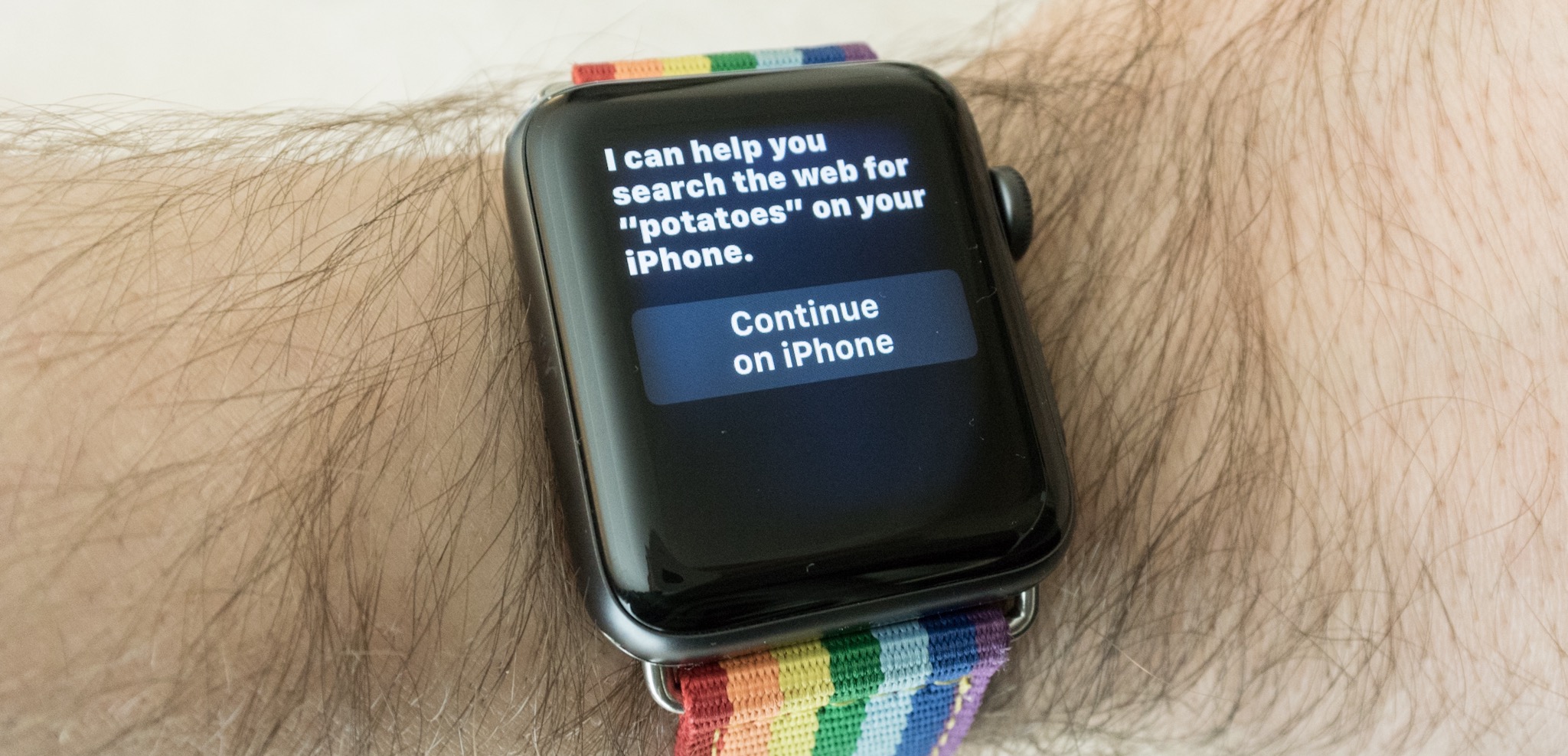
HomePod needs to recognize multiple voices ASAP
The lack of multi-voice recognition is crushing on multiple fronts:
- The personalized data access (messages, notes, and reminders) becomes completely open to anyone when I’m in the house. It’s one thing for my family and friends to be able to access my sensitive information, but even a burglar could see a HomePod on the shelf and access all of my messages and notes just because I’m sleeping and my phone is on the Wifi. Pardon the language, but this is shitty security.
- Because Siri does not recognize different voices, anyone else in the house using Siri on their own devices will accidentally trigger the HomePod to repeat the same action. All that beautiful logic I listed above is broken when anyone who is not me uses Siri in my home. I saw this first hand when my wife was using Siri on her iPhone to set a bunch of reminders for herself. I realized the next day that HomePod heard all those and added them to my reminders as well. Faaaaantastic.
- HomePod is supposed to be very good at giving me music I want based on my tastes and listening history. This works well for me most of the time, but now that my wife has also been using this, my recommendations both on the phone and HomePod are less for me, and more and average of the both of us. When I ask for something it should influence my Apple Music library, and when she asks something it should influence her separate library. I can only imagine how messed up this will make parents’ recommendations who have kids asking the HomePod to play god knows what.
The ideal solution to the above problem is to let the HomePod learn multiple people’s voices and perform actions based on who’s asking. If I ask something use my data and accounts, if my wife asks something use her accounts, and if anyone else asks something make sure it has no access to either of our sensitive data or influence our music recommendations. I was able to think of this solution in like 5 seconds because it’s how Google already handles multiple voices and Apple needs to catch up. HomePod is a fundamentally less useful and delightful product without this.
Smart Home
I’ve made a conscious choice over the years to make sure all my smart home stuff (mostly wall plugs and lightbulbs) work with all 3 major smart assistants. Because of this, my Belkin, iDevices, iHome, and Philips Hue devices work flawlessly with HomePod. All the settings carried over from my iPhone and I can turn things on and off with ease.
Some reviewers have expressed concern with HomeKit having a smaller footprint in the smart devices market than Alexa and Google, but in my experience it has not been difficult at all to find devices that work. Alexa is the clear winner here, as basically everything work with it, but Apple is no slouch.
How about multiple timers?
We 👏 need 👏 multiple 👏 timers 👏 now. And no, reminders are not the same thing and do not solve the same problems. I should be able to set multiple timers at once (throw this “advanced” feature into iOS too) and I should be able to name them.
Turning off the mic
There should be a better way to mute and unmute the HomePod. You currently have to say “hey Siri, stop listening” and it will mute the mic (notably, “turn of the mic” and “turn off the microphone” confuse it beyond all get out).
- There is no indication on the HomePod that the mic is actually off, which makes it easy to forget what state it’s in. Maybe this would be useful for people who want this to be just a speaker and never use the voice features, but most people will only turn off the mic in certain situations and the indicator would be nice to have for those folks. Google and Amazon have this on their speakers and I love it.
- A hardware switch may not be coming to the HomePod, but it would be nice to have a better way to toggle this on and off without having to ask or going into the Home app on my iPhone to flip a digital switch. This isn’t essential, but it would be nice at times.
Compared to the other asks here, this is a super low priority, but I thought was worth noting.
Need for a “night mode” so I don’t blow my eardrums at 1AM
Google Assistant devices have a concept of “night hours” which has the speaker automatically behave slightly different at night. This dims the top-mounted LED and quiets the volume of music and voice feedback during the hours you request. While the LED issue isn’t an issue, as I think the LEDs are pretty mild, even at night, but the volume change would be hugely welcome. Listening to loud music at 5PM and then asking a question at midnight should not result in Siri yelling her answer to me5. Maybe don’t even make this a setting, but something it automatically does.
Where are the calendars?
This is a gimme, but why the hell can’t HomePod access my calendars? This is lame, especially since this is something natively built into the Calendar app for iOS. Siri on all other devices can do this, so it’s bizarre that HomePod doesn’t.
Connections to other Apple devices
HomePod should also be more aware of my other devices. I should be able to ask “where is my phone” and my phone will make a noise like it does when I press the button on my Apple Watch to find it. It should be able to talk to my Apple TV and do things like turn on, opens apps, and open media from the TV app. These are the sorts of advantages you get from going all in on Apple products, and again it hurts a little more because things like this are possible with Google’s competing Home and Chromecast devices.
A better wake up routine
If you ask HomePod to tell you about your day it will tell you it can’t do that. Alexa and Google Assistant have features that not only tell you the weather, your calendar events/reminders for the day, how long your work commute looks, and quick news summaries from the media outlets of your choice, but let you customize which of those elements you want to hear and in what order.
Siri can tell you the news by playing a short daily podcast from either The Washington Post, New York Times, Fox News, or NPR. Google offers 110 news sources for this same feature and while Apple’s news sources are usually political shows, Google has options for finance, entertainment, sports, and more in addition to the standard news options.
Who is this for?
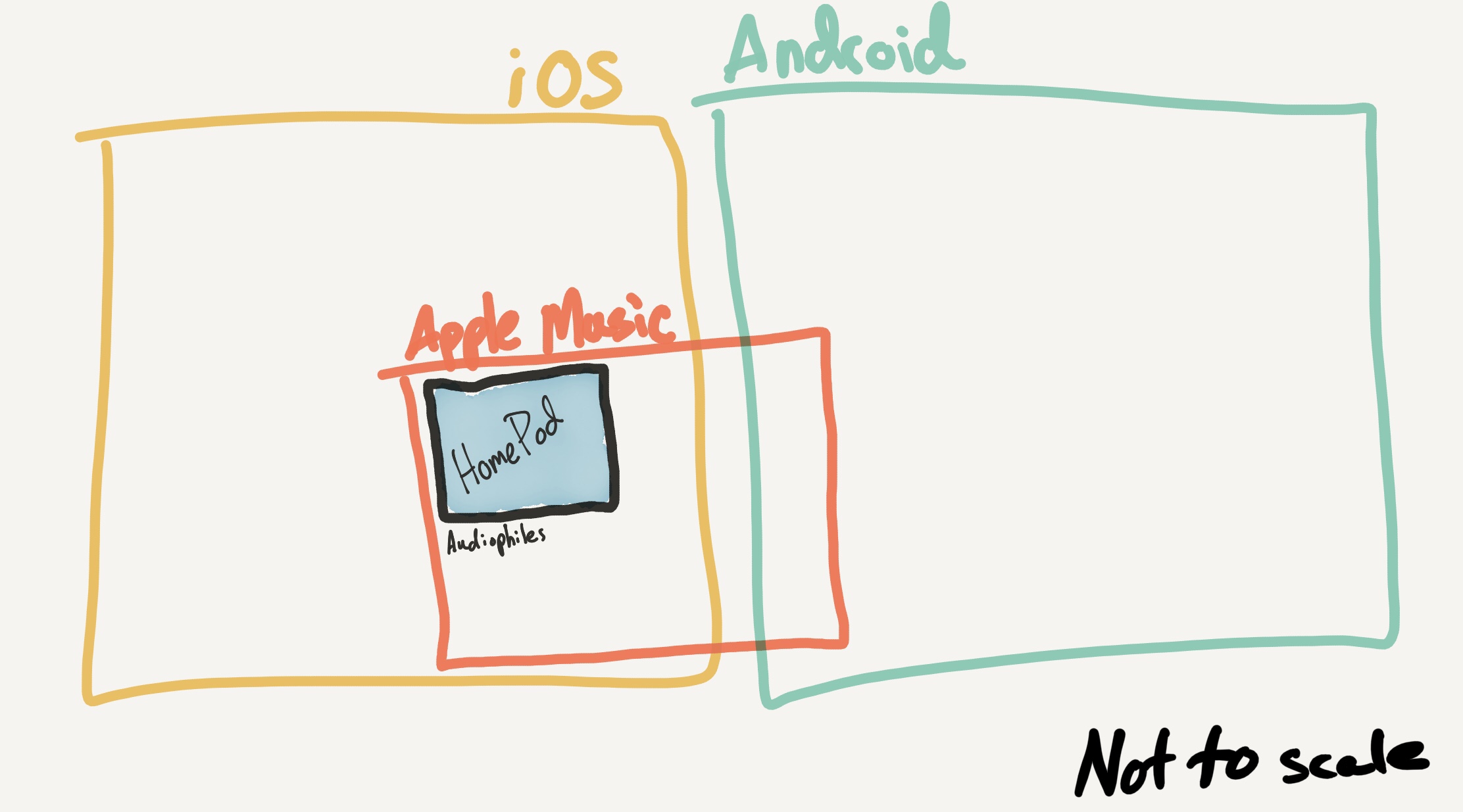
The above graphic is as close as I can get to suscinctly stating who this is for. If you are an iOS-only user and if you subscribe to Apple Music and if you care more about audio quality than a robust digital assistant, then the HomePod is for you. That sounds a little harsh, but I think it’s accurate.
If you use Android, you can’t even set it up. If you get an iOS friend to come over and walk through the setup process for you, then it will only work via voice and your phone will never be able to talk to it.
If you subscribe to Apple Music, then it works great, but if you are an iOS user who uses Spotify, Pandora, or Google Play Music then you will have to use this speaker as an output device for your phone. This would be fine 2-3 years ago, but when basically all other speakers coming out today have native support for those services, then this makes the HomePod a worse option.
Finally, if you are happy with Siri’s more limited abilities, then it will be a sufficient assistant for you, but those looking for more will currently have more luck from a speaker with Google Assistant or Alexa built in. For me, Siri has the benefit of being able to see all of my Apple-centric data, but I do still have my Google Homes and Echo Dot plugged in and listening for occasions where Siri just can’t cut it.
In my opinion, the optimum setup right now is to have a HomePod in the living room for music and movies, and Google Home Minis all over the house; not because these are fundamentally different products, but because the HomePod can’t do everything well yet and Google is just too far ahead.
Final Thoughts
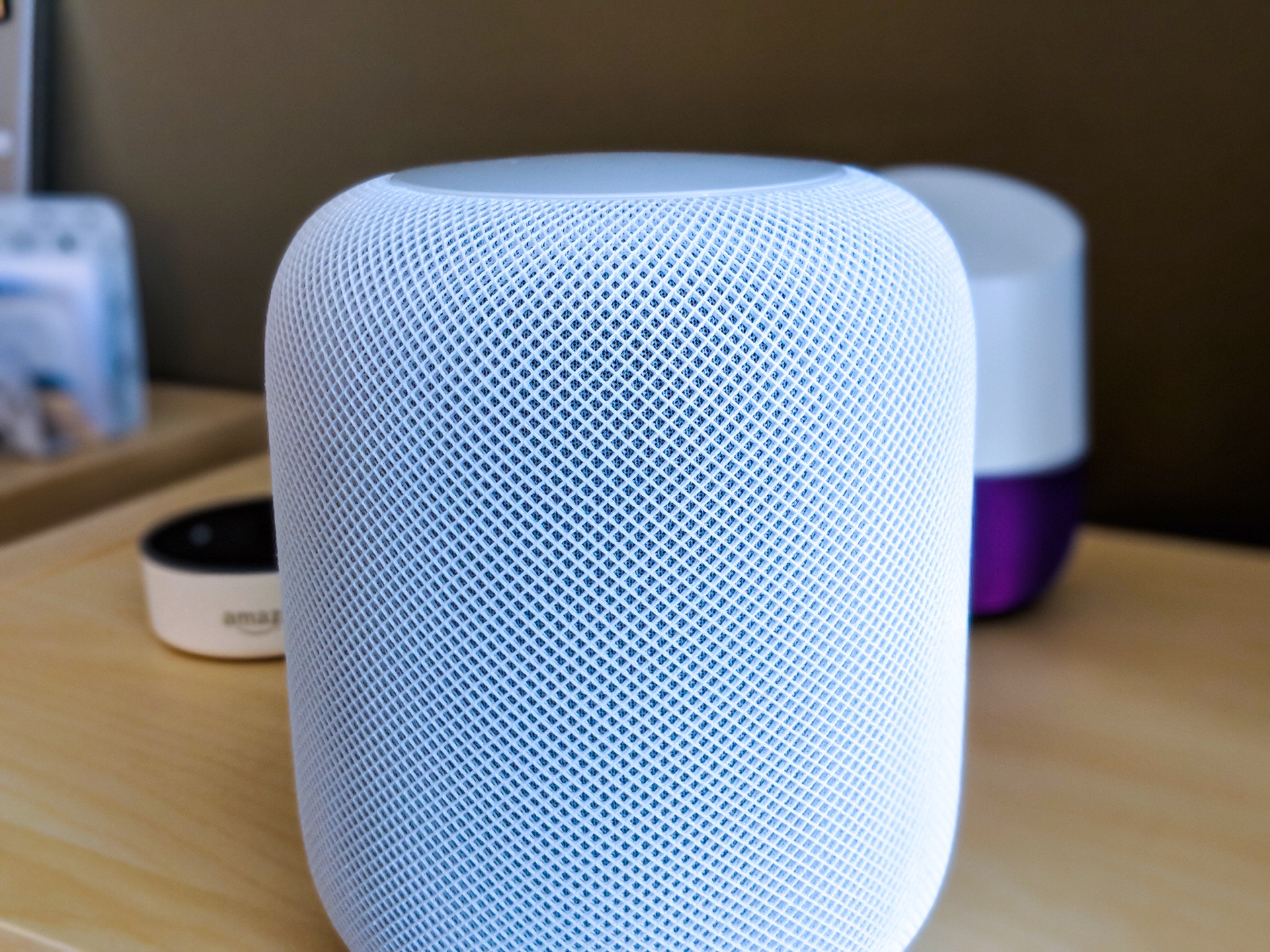
The HomePod is ripe with potential, but is not something I think anyone needs to run out and buy today. The good news is that the hardware is incredibly solid and there really isn’t anything I can complain about; it sounds great and looks good.
All of my complaints with the HomePod can be fixed via software updates. Siri can get smarter on the server and not even involve the user in updating anything, after all! I think Apple can get an easy win by adding calendar support first, then add a bass slider in the settings so I can tone down the bass in my apartment, and then move onto multiple voice recognition. Those two changes would make me a lot happier about the product overall. I think the other pain points I mentioned in this review need to be addressed as well, but we’re not going to get it all on the same day, so hopefully they’ll prioritize the right things.
All this said, you should choose to buy or not buy the HomePod based on what it does today, not on the promise that Apple will surely fix anything mentioned above. At $349 it’s not a cheap device and Apple does not have a history of advancing Siri as fast as people would like, so make sure it will make you happy today. There are plenty of people out there for whom that will be the case, but it’s not everyone. Apple has a tendency to make products that have almost every human being on the planet as their target market. With this product though, they have a more niche device that many people, even Apple fans will have to look at and say “that’s not for me,” and feel okay about it.
Apple, you’ve made a killer speaker that sounds amazing. All your work now has to be centered around improving voice interactions. The HomePod has the potential to dominate the speaker market (smart and otherwise), but it needs to get better on the “smart” side and I personally think they need to make a less expensive model to get in the price range of far more people. $349 is a hard sell for anyone, and most people would never spend that much on a speaker, no matter how good it sounds or how smart it is.
I say it all the time, but watch this space; Apple has entered the smart home game.
- If you can pitch your wares as peerless, then you can set whatever standards you want, so I see why Apple would do this. ↩
- My desk is a slab of wood screwed into 4 metal legs from IKEA. ↩
- I’m making a guess people reading a tech site like this are not satisfied with Apple’s app, but I could be wrong. ↩
- “search the web for potatoes” for example. ↩
- I should note that you can change the volume of the HomePod by asking Siri to go to a certain percent, but remembering to ask this every night and then raising it up again the next day is a bit of friction I wish it didn’t have. ↩


